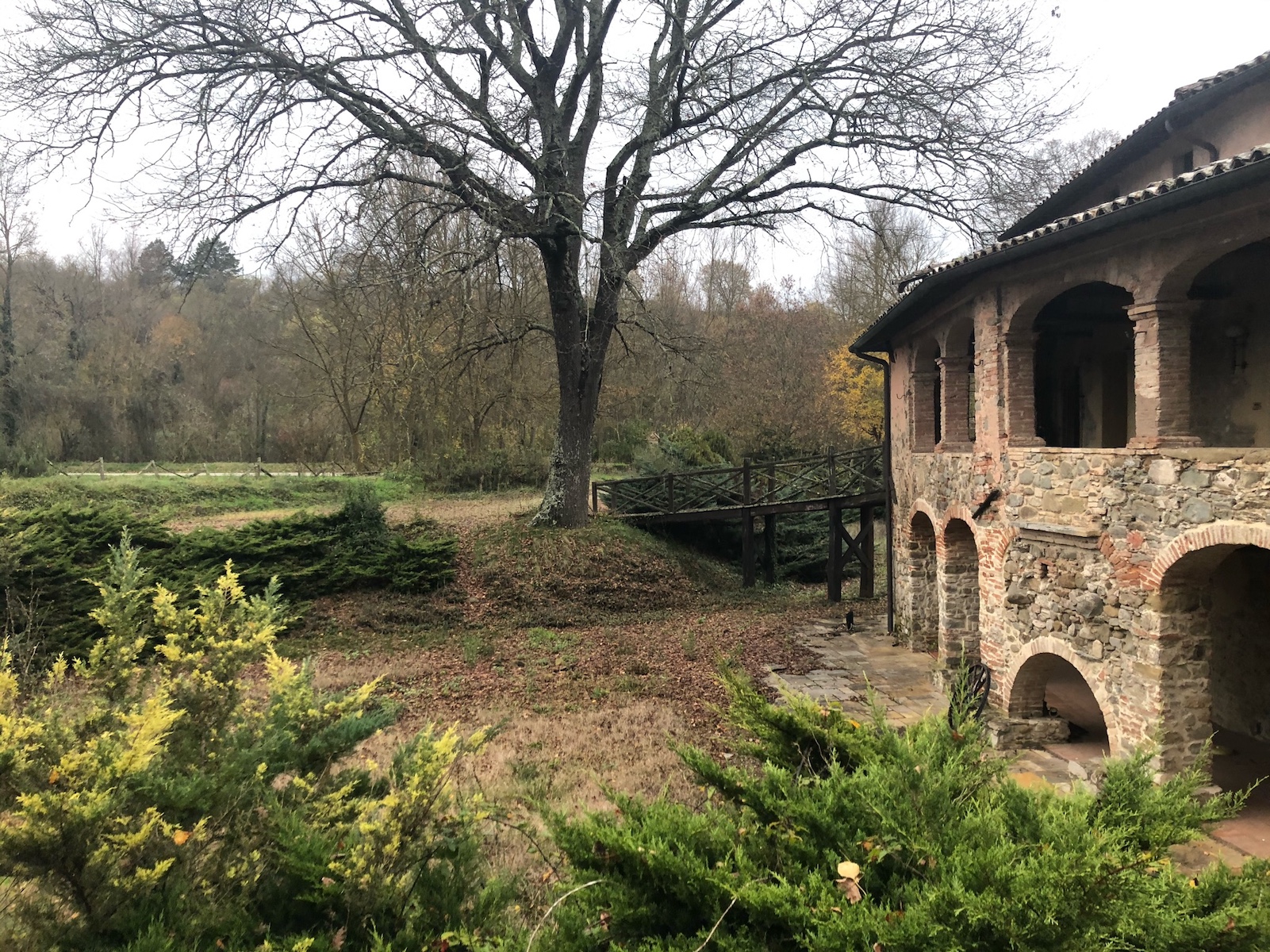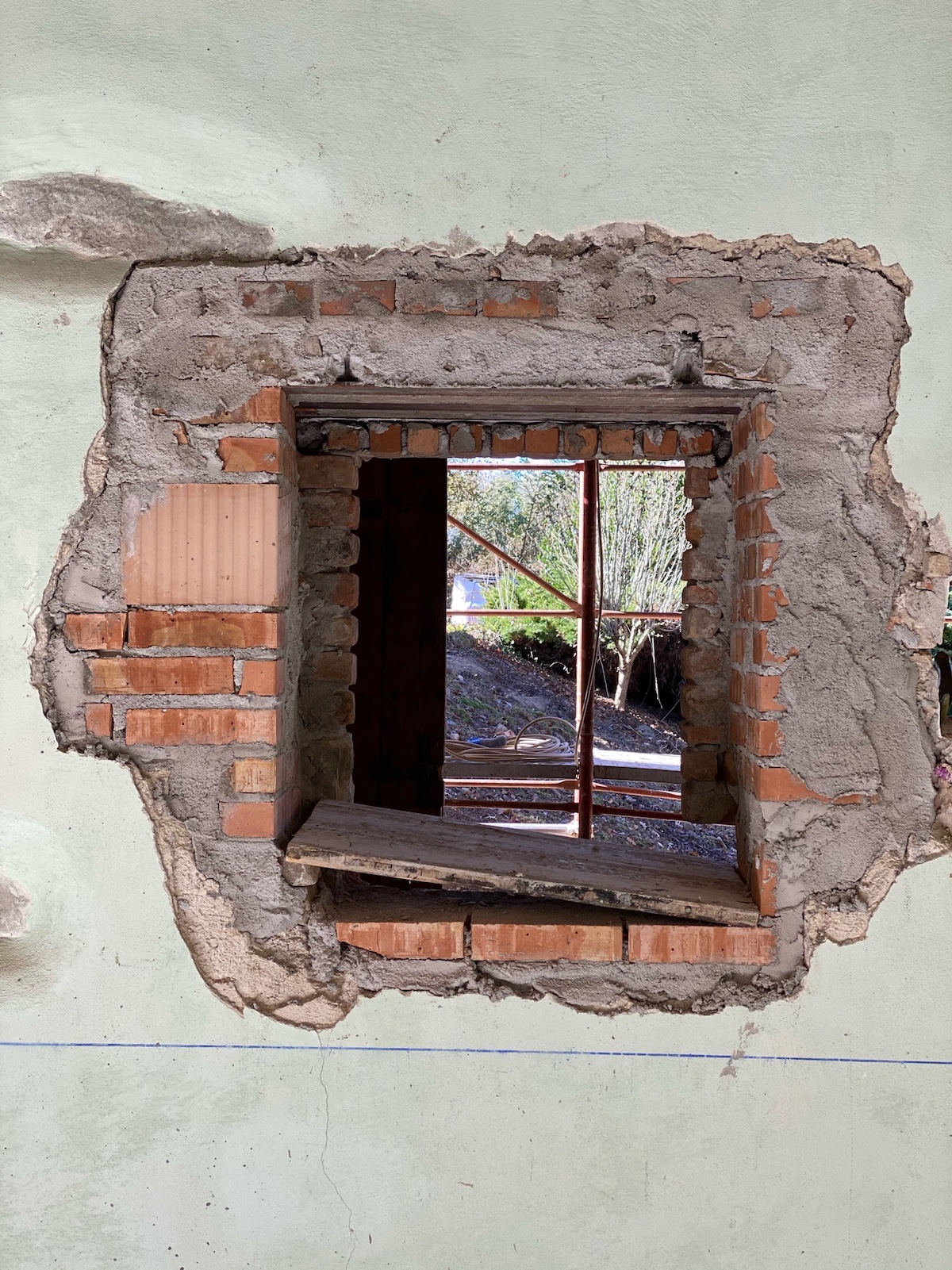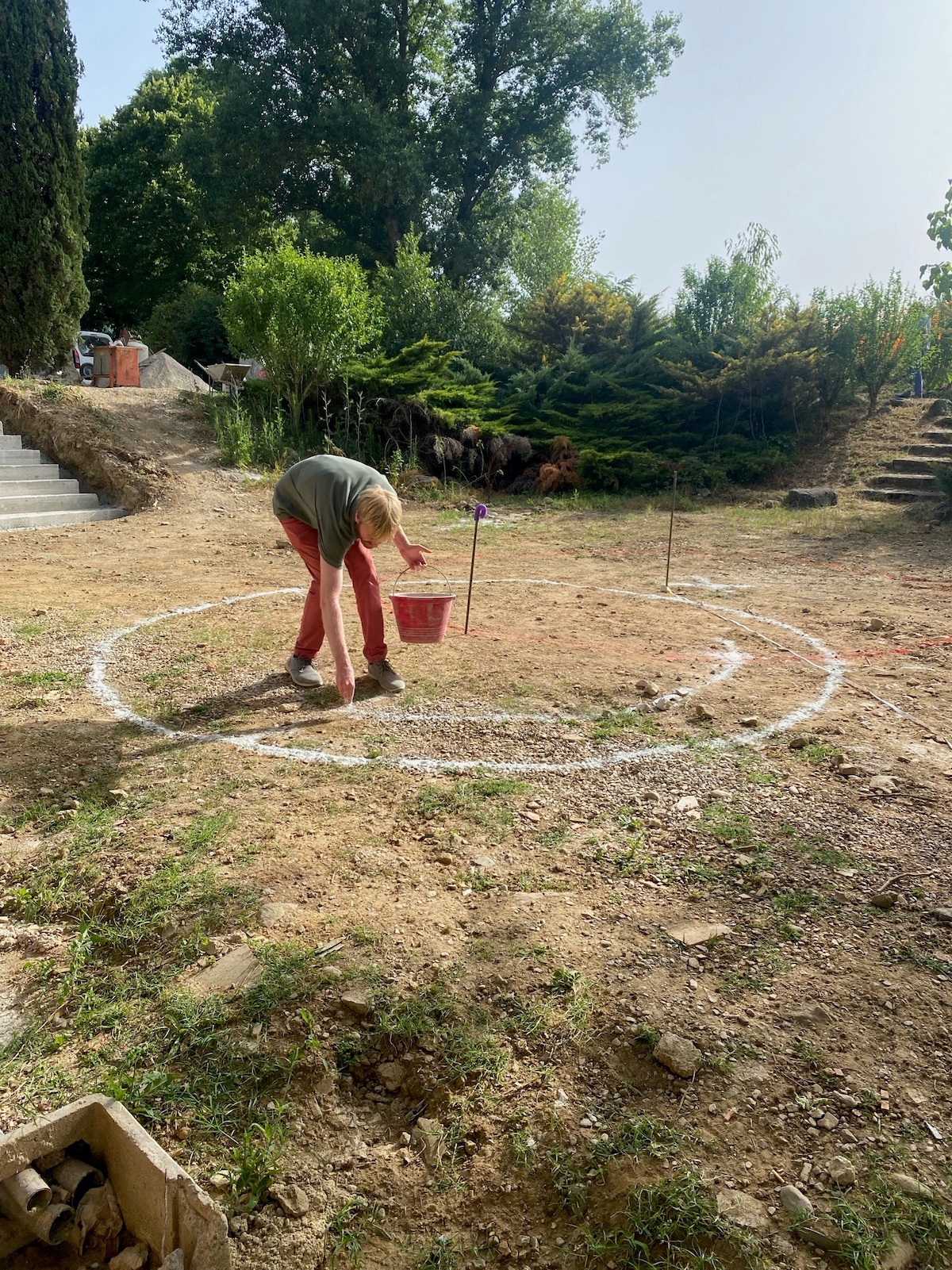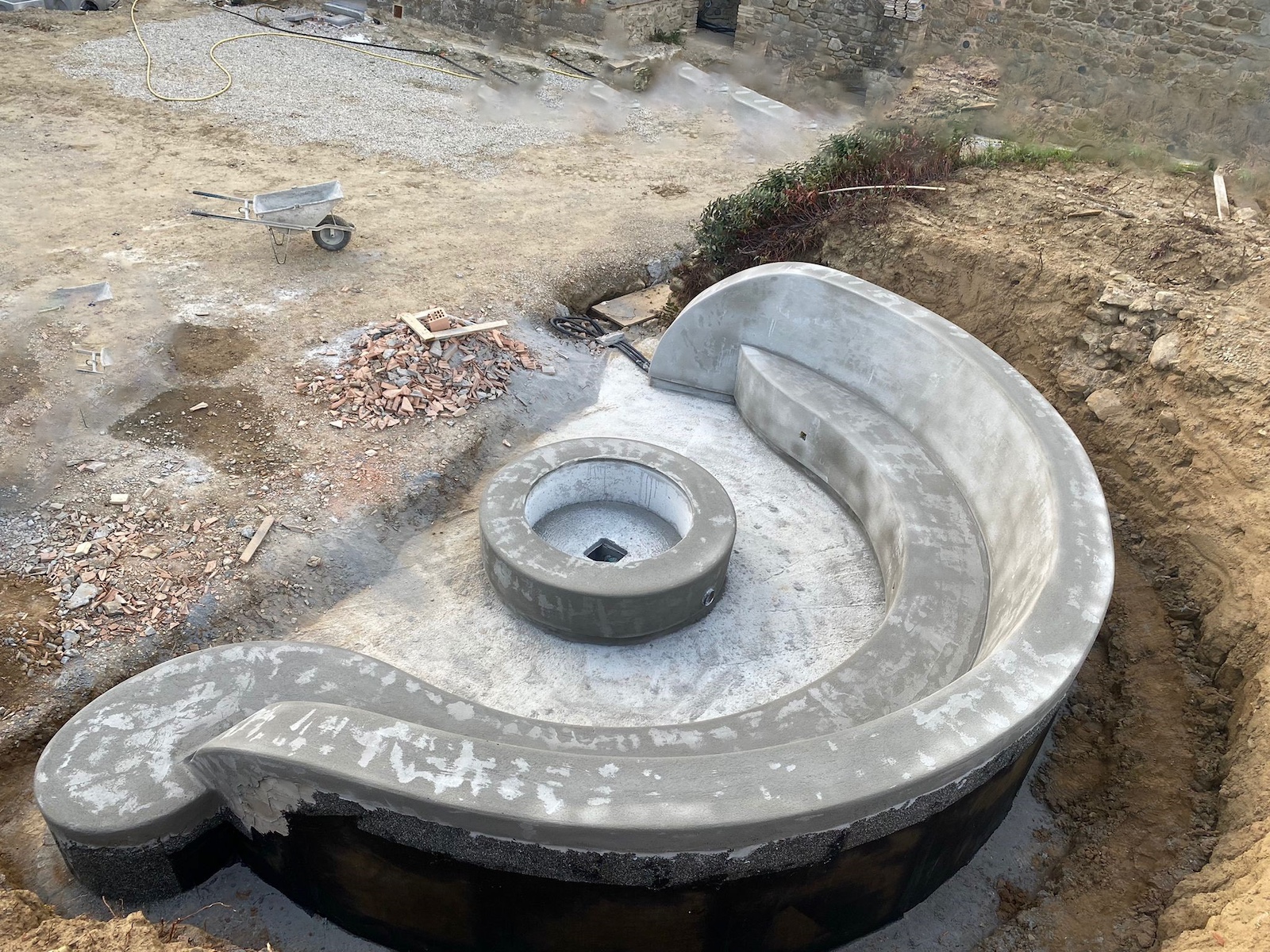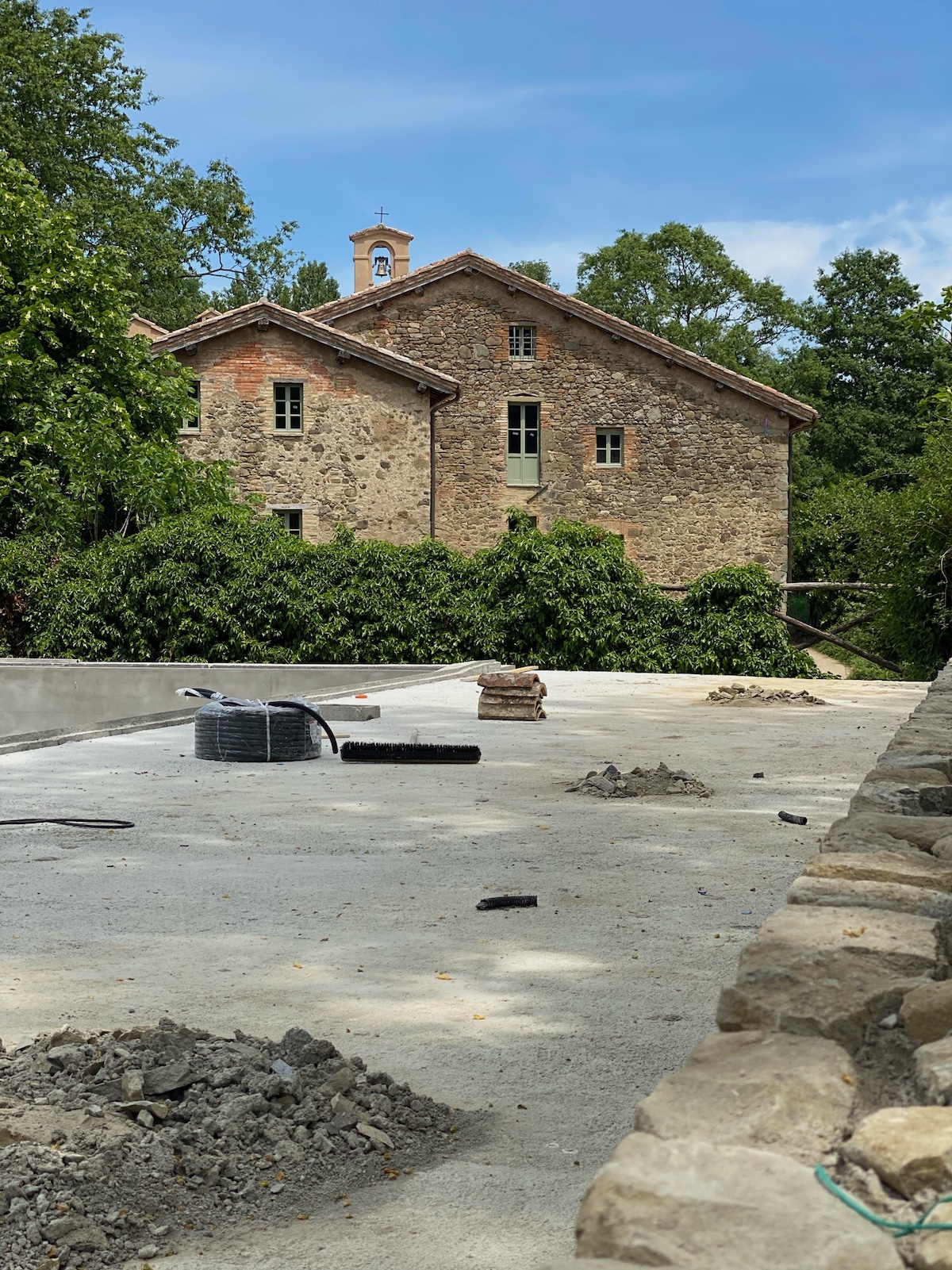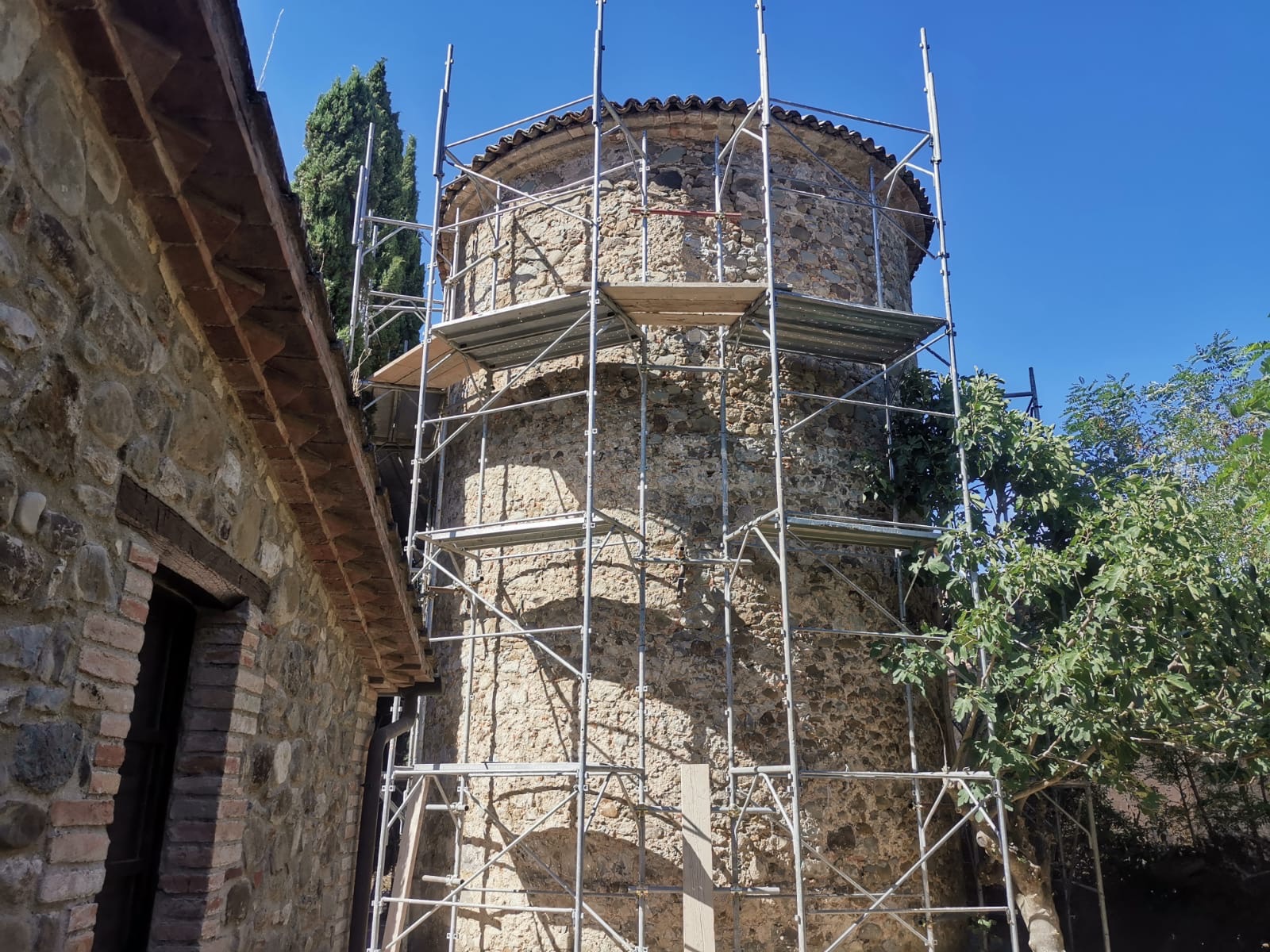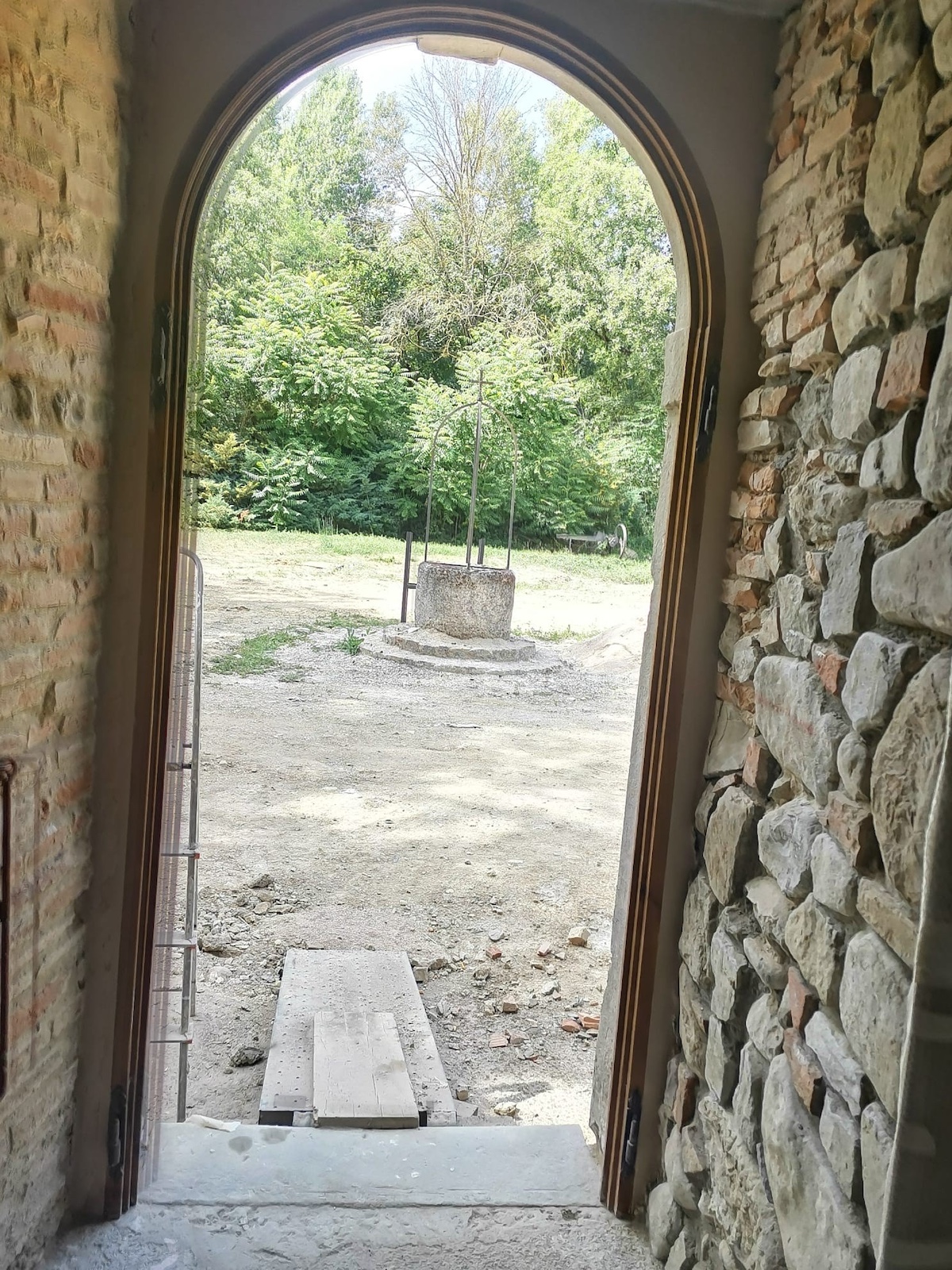JOIN the AFICIONADOS
Get the insider news and lowdown on what we've been up to, where we've been, and who we've met along the way. Be the first to discover new places and get the scoop on our favourites.
Some places don’t call you with grandeur or promise; they wait in silence, growing wild with time, and when you finally arrive, it feels as though they were expecting you all along.
Such was the case with Vocabolo Moscatelli, a 12th-century monastery buried in the Umbrian hinterland, camouflaged beneath vines and encroached by forest. It hadn’t seen a soul in years. The architecture was slipping into ruin, almost consumed by nature. The buildings were quietly dissolving back into the landscape when Catharina Lütjens and Frederik Kubierschky first walked among their bones.
It all began with a quiet tip-off. Catharina Lütjens was working with an investor when news surfaced of a disused 12th-century monastery for sale, hidden deep in the Umbrian countryside. The investor wasn’t interested in running a hotel himself, but he recognised something in Catharina and Frederik: the kind of duo who might just make something remarkable out of ruin. Being no strangers to the world of hospitality, the opportunity was theirs if they were willing to take it on.
“Nature had completely reclaimed it,” Frederik recalls. “The jungle was slowly swallowing the buildings. But despite the decay, or perhaps because of it, there was a profound, almost mystical energy in the air.”
They discovered not a ruin but a relic charged with emotional architecture. The bones of the monastery carried centuries of rhythm, ritual and silence. “It was like the place had been waiting for someone to see it again,” he says.
Restoration here wasn’t a makeover; it was an act of translation. The monastery wasn’t a blank canvas, but a place etched with the memory of time. The challenge was to preserve that memory without turning it into a museum.
“What surprised us wasn’t a single discovery, but rather the quiet layering of time that revealed itself in unexpected ways,” explains architect Jacopo Venerosi Pesciolini of Florence-based Studio Archiloop. “Often it was enough to remove something, a finish, a door, a covering, for the place to begin breathing again.”
This was not restoration as erasure, but architectural listening. “These revelations weren’t always visible; they came as intuitions, a light falling differently, a proportion asking to be respected, a void that didn’t want to be filled. More than uncovering, we learned to listen.”
Of course, behind the poetry, there was painstaking logistics. Introducing 21st-century infrastructure such as plumbing, lighting and heating into 12th-century bones demanded surgical precision.
“Integrating heating, plumbing and lighting into an 800-year-old structure was no small task,” says Frederik. “But we were meticulous in keeping all forms of technology discreet and non-invasive.”
Regulations from the conservation authorities were firm, but the process was collaborative. The project was never about compromise; it was about dialogue. “It was clear our intention wasn’t to diminish the building’s integrity but to highlight and celebrate it,” says Frederik. “Thanks to this shared understanding and Jacopo’s guidance, the journey was smoother than expected.”
What emerged is a study in material intelligence. This is not a design that performs; it resonates. Waxed iron, Umbrian stone, raw timber and hemp linen carry the weight and texture of memory, balanced with restraint and rhythm.
“The dialogue between past and present was at the heart of the project,” says Jacopo. “We used natural, tactile materials that could speak the same language as the original building, but with a lighter grammar.”
The palette is muted and grounded: earthy tones, sage greens and dusty greys, allowing light to become the protagonist. Contemporary interventions feel suspended rather than imposed.
Design details speak to intimacy and intention. “Every room has a different colour concept,” Catharina explains, “and the tiles, handmade by Cotto Etrusco just 20 minutes from here, were customised for us.” Other elements, such as the bamboo dome, the custom black bathtubs-for-two and sustainable hemp linens, layer the story with sensuality and integrity. The bell, cast by Pontificia Fonderia Marinelli, carries a Latin inscription: Ubi bene, ibi patria. “Where I’m good, I’m at home. That resonates quite well with our daily efforts,” he adds.
The sentiment rings true. Catharina and Frederik’s partnership forms the emotional core of the project. Their connection to Italy runs deep. Frederik moved from Germany to Treviso at fourteen, learning the rhythms of Italian life and language, later entering the hotel world via his mother’s business. Catharina, German-born but Mediterranean in spirit, always sensed their future lay in Italy. “Fred always says that he feels the most at home here, where he grew up,” she tells us, 'as do I."
Today, Vocabolo Moscatelli is that home. On a quiet morning stroll through the garden, the couple point out their favourite corners: a free-spirited landscape designed to bloom year-round, the pergola wrapped in wisteria, the half-forgotten orchard now replanted with esoteric saplings. They have created not just a hotel, but a lived-in reverie. They’ve planted all the right seeds. Now it’s time to let them grow.
Evenings end as they should, with stories and glasses raised around the fire pit. “It’s a time to unwind, connect and celebrate the joy of simply being together,” Frederik says. The ritual may have shifted from prayer to limoncello, but the spirit of sanctuary remains.
Would they do it again?
“Yes,” Frederik replies. Absolutely, it is so rare to find the perfect building, and the setting alone makes it all worth the toil." Catharina agrees, with a heartfelt smile as wide as the bell in the tower.
And somewhere within the stone, you sense the monastery is smiling too.
